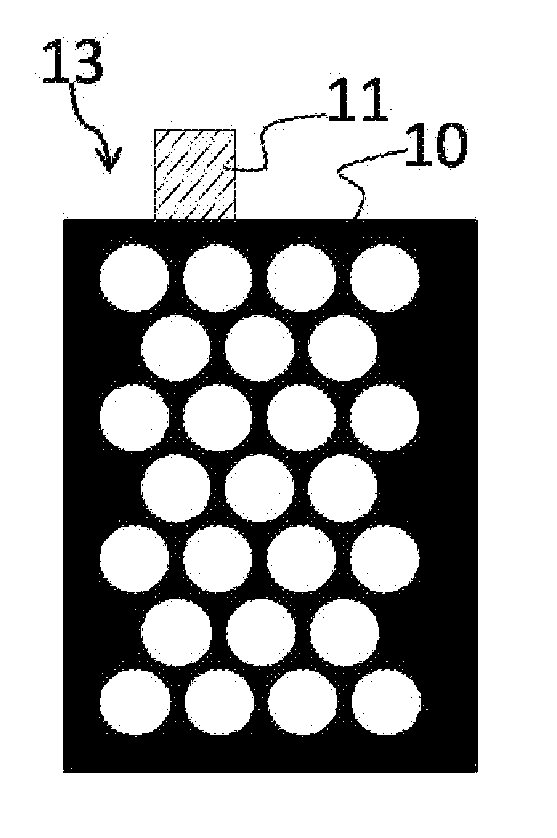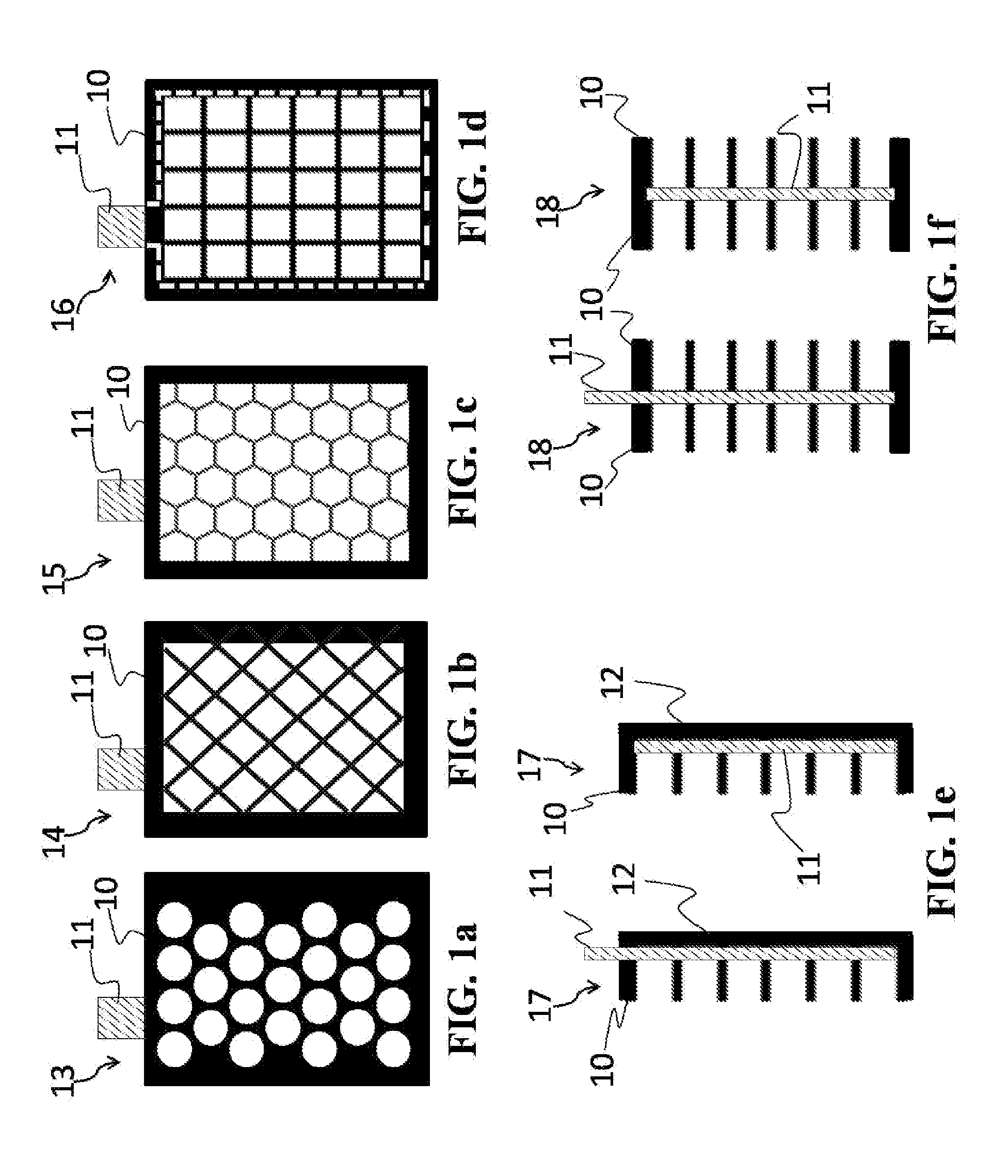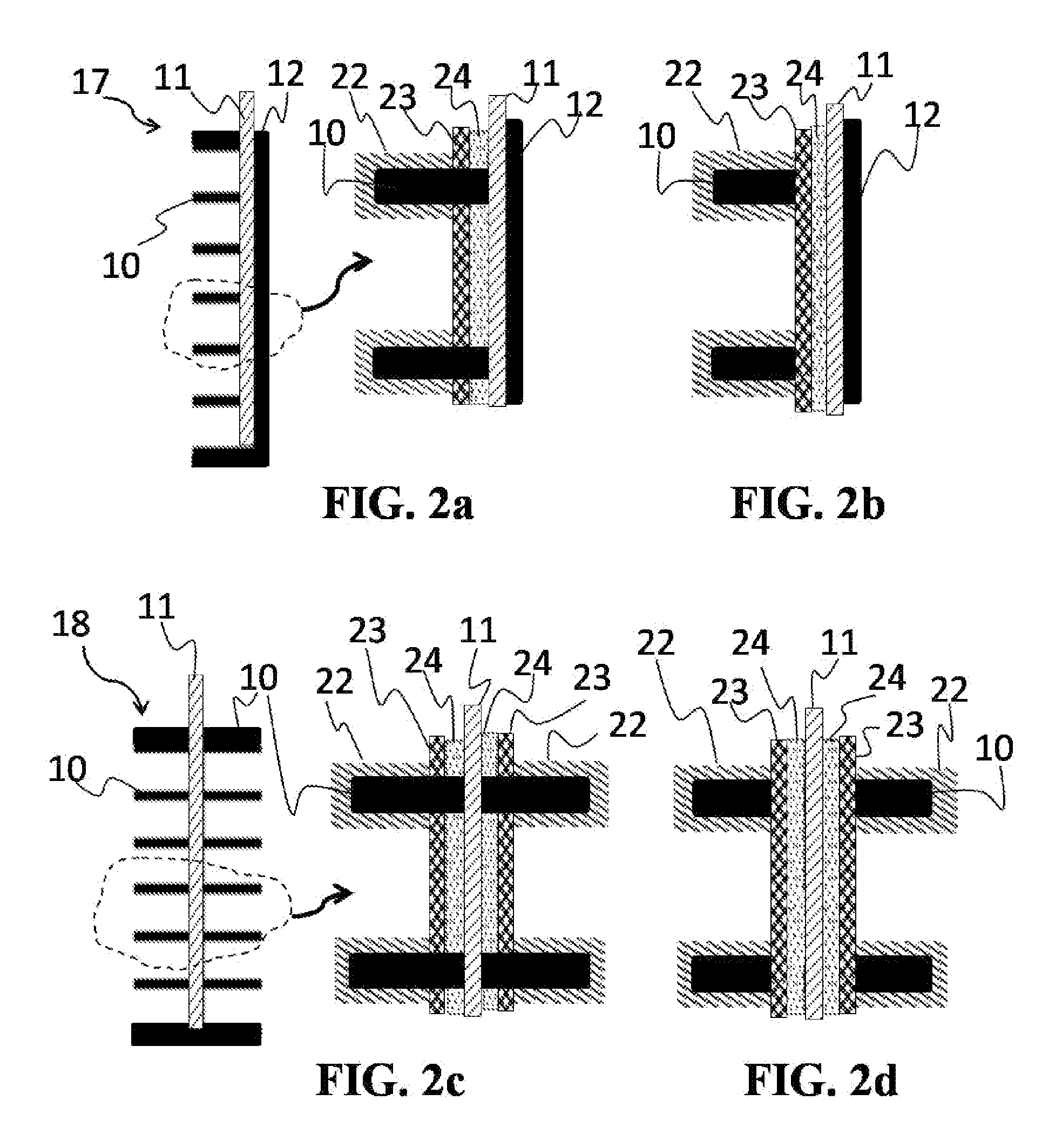Current collector for lead acid battery
a lead acid battery and collector technology, applied in the field of batteries, can solve the problems of shortening the cycle life of current commercial lead acid batteries, and achieve the effects of long cycle life, high specific energy, and low cos
- Summary
- Abstract
- Description
- Claims
- Application Information
AI Technical Summary
Benefits of technology
Problems solved by technology
Method used
Image
Examples
example 1
[0041]A 2 V lead acid battery was built according to the monopolar configuration as shown in FIG. 4a. The grid structure, polycarbonate, and aluminum foil were chosen to make the current collector. The porous polymer was chosen as the separator.
[0042]FIG. 5 shows the discharge characteristics of this battery at different charged times. The battery was discharging at 21° C. The charge is fast. 5 minutes can be charged to about 48% of the capacity, and 10 minutes to about 60% of the capacity. The battery can be fully charged in less than 2 hours. The utilization rate of the active materials was estimated based on experimental data, and is about 60%. The specific energy of this battery can be approximately calculated, and is about 83 Wh / kg. Cycle tests have been performed for more than three months and are ongoing, and results indicate that the change of the performance of the battery after more than 160 cycles is negligible.
example 2
[0043]A 6 V lead acid battery is built according to the bipolar configuration as shown in FIG. 4b. The grid structure, polycarbonate, and aluminum foil were chosen to make the current collector. The porous polymer was chosen as the separator.
[0044]FIG. 6 shows the discharge characteristics of this battery at different charged times. The battery was discharging at 21° C. The charge is fast. 5 minutes can be charged to about 51% of the capacity. The battery can be fully charged in less than 2 hours. The utilization rate of the active materials was estimated based on experimental data, and is about 60%. Then, the specific energy of this battery can be approximately calculated, and is about 83 Wh / kg.
PUM
| Property | Measurement | Unit |
|---|---|---|
| thickness | aaaaa | aaaaa |
| thickness | aaaaa | aaaaa |
| thickness | aaaaa | aaaaa |
Abstract
Description
Claims
Application Information
 Login to View More
Login to View More - R&D
- Intellectual Property
- Life Sciences
- Materials
- Tech Scout
- Unparalleled Data Quality
- Higher Quality Content
- 60% Fewer Hallucinations
Browse by: Latest US Patents, China's latest patents, Technical Efficacy Thesaurus, Application Domain, Technology Topic, Popular Technical Reports.
© 2025 PatSnap. All rights reserved.Legal|Privacy policy|Modern Slavery Act Transparency Statement|Sitemap|About US| Contact US: help@patsnap.com



